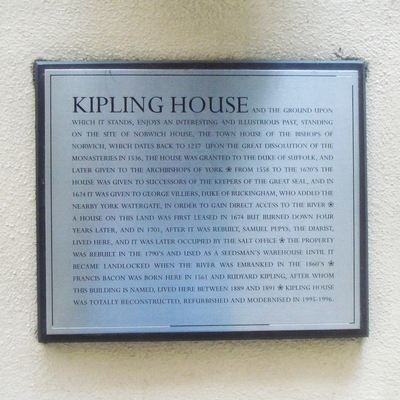Built as the town house of the bishops of Norwich. At the dissolution of the monasteries in 1536 King Henry VIII and Charles Brandon, Duke of Suffolk exchanged properties: Suffolk gave up Suffolk House (Southwark) in exchange for Norwich House.
it was granted to the Archbishop of York in 1556 and thus gained the name York House, which it retained for the rest of its existence.
1558 -1620s the house was given to holders of the title Lord Keeper of the Great Seal (LKGS) of England. 1624 it was acquired by George Villiers, Duke of Buckingham, who added the nearby, still extant, York Watergate, in order to gain direct access to the river.
His successors lost the house during the Civil War but his son, the 2nd duke, regained it in 1657 when he married the new owner's daughter. He sold it in 1672 for development by Nicholas Barbon. The house was demolished shortly after the sale. (Do see the 'Of' plaque for how the new streets were named.)
Notable occupants include: Francis Bacon (the son of a LKGS, he was born here and lived here again when he was himselt the LKGS 1617-20), Thomas Egerton (under house arrest in the custody of an LKGS), Peter Paul Rubens.
Most images, including this one, show the river side of the house, including the Watergate, to the right of the image. Whereas this image shows its north front, on Strand.
This copy of a 1658 map shows York House. This 1685 map shows the area after the redevelopment, with all the new streets in place (though the one that is meant to have been named Of Alley is not so labelled).
Sources include: Report.








Comments are provided by Facebook, please ensure you are signed in here to see them